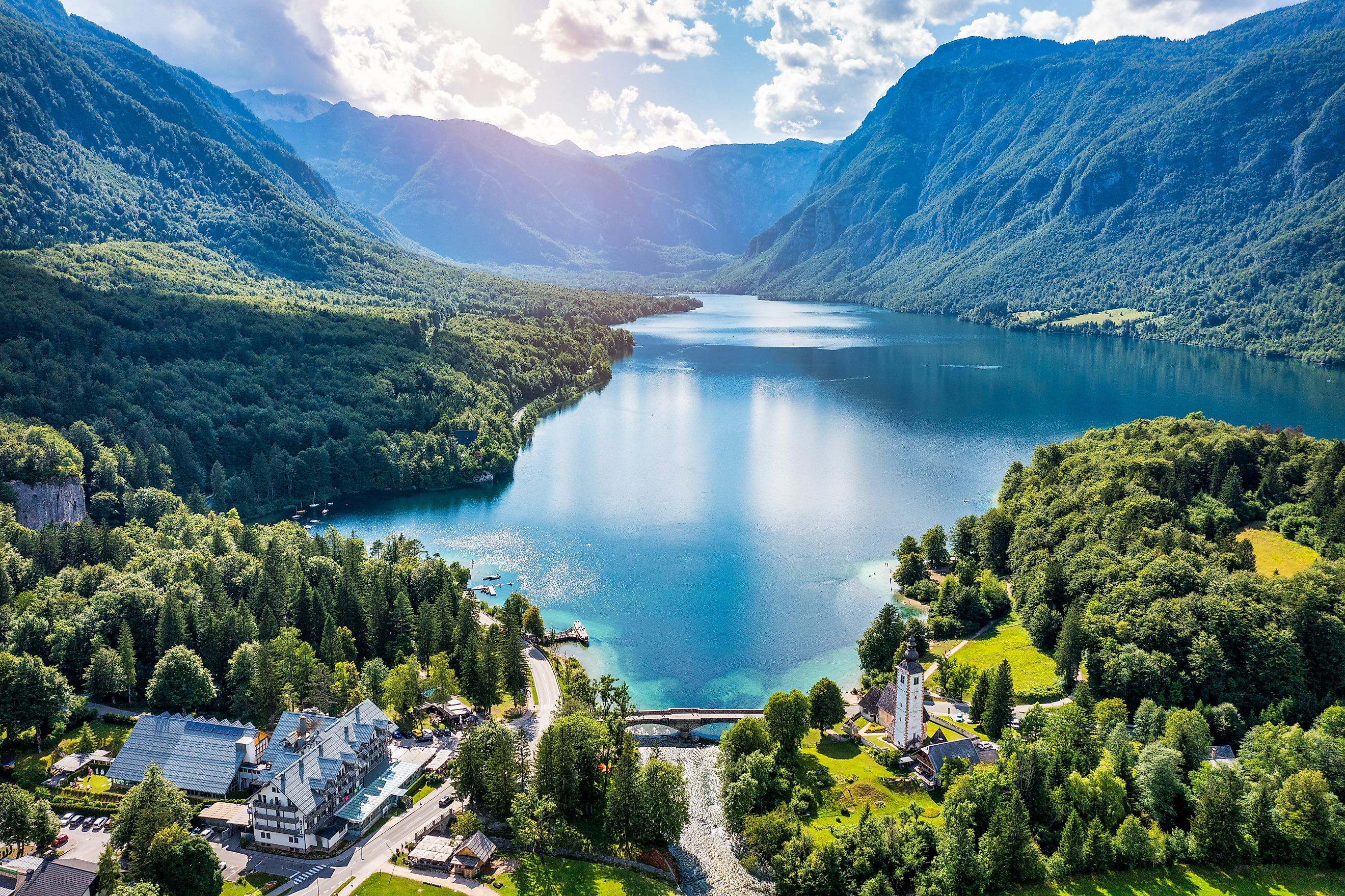
7 Best National Parks In Europe
Europe is home to over 400 national parks. From the Pyrenees to the Caucasus and from the North Sea to the Mediterranean, this exquisite continent lays claim to camera-draining landscapes, eclectic cultures, and endless layers of complex history. Its national parks, many of which are also UNESCO World Heritage Sites or Biosphere Reserves, make these distinctly European assets available to adventurous gap-year students, guide-book-toting retirees, and everyone in between. For this article, I've sought to highlight some overlooked treasures outside of the typical Western circuit, while still tipping the hat to undeniable classics. These are seven of the best national parks in Europe.
Cinque Terre National Park: Italy
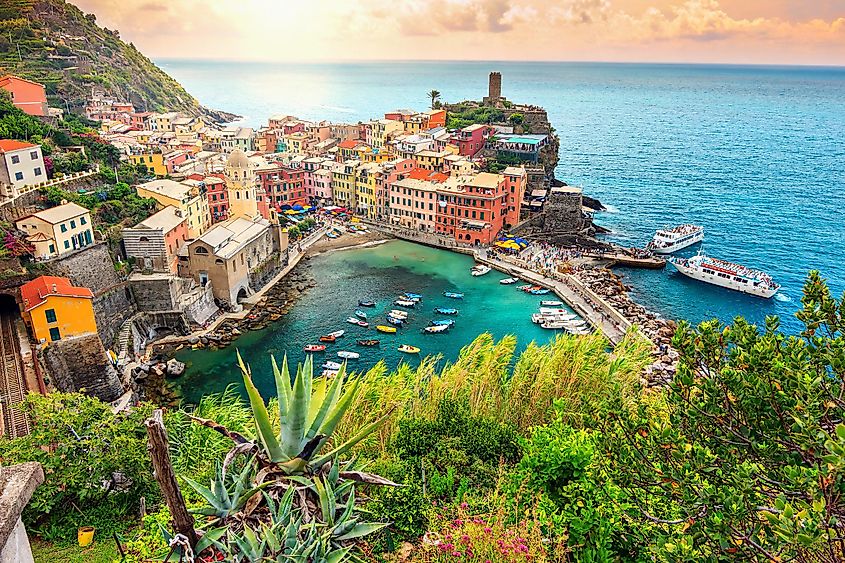
Not all great national parks have to be large or even specifically focused on nature. Case in point, Italy's colorful coastal collection known as Cinque Terre National Park (i.e., "Five Lands") is one of this beloved country's best features. Parco Nazionale delle Cinque Terre, as it is known locally, occupies 38.6 square kilometers of the Boot's northwestern shore - roughly equidistant from Genoa (to the northwest) and Pisa (to the southeast). Established in 1999, this national park and World Heritage Site encapsulates the five brightly-painted seaside villages of Corniglia, Manarola, Monterosso al Mare, Riomaggiore, and Vernazza (collectively home to about 5,000 residents)- all of which are linked by scenic hiking trails that navigate the shoreline's ruggedly-beautiful cliffs and coves. I had the pleasure of walking between several of these communities - stopping for fresh-squeezed lemonade from a local farmer along the way, then eating authentic cuisine in the evening, and waking to the sounds of the Ligurian Sea in the morning.
In order to maintain this enclave's pedestrian-friendly feel, visitors are encouraged to arrive by boat, or via the La Spezia-Levanto rail line. Both transportation methods only add to the charm of Cinque Terre National Park.
Central Balkan National Park: Bulgaria
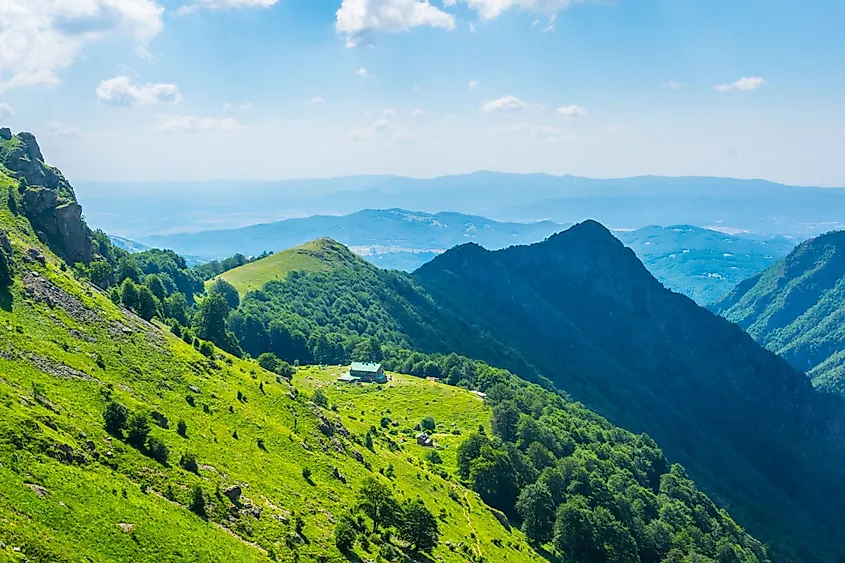
A few years ago, I took on the Balkaniada Sky Race and got an intimate (albeit exhausting) look at the steep and sprawling mountains of Bulgaria's Central Balkan National Park. Formed in 1991, this 720 square-kilometer haven joins nine nature reserves across three political districts and is itself an important part of the National Ecological Network (NEN), which, along with Bulgaria's two other national parks, includes 952 other protected areas (amounting to 5.1% of the entire country). Central Balkan National Park covers an 85-kilometer-long and 10-kilometer-wide stretch of the Central Stara Planina Mountains (aka the Balkan Mountains) and ranges in altitude from 550 meters above sea level, all the way to the highest point in the range: Botev peak (2,376 meters). Here, craggy peaks stand above primeval beech forests and rich alpine meadows that are often graced by free-range cattle. Because of its "outstanding universal value," UNESCO declared Central Balkan National Park a World Heritage Site in 2011.
Prielbrusye National Park: Russia

Back in 2018, my dad and I joined an expedition to climb the highest peak in Europe: Mount Elbrus (5,642 meters). Standing atop the dormant volcano, bare-chested in the midday sun was certainly special, but it was the days leading up - the acclimatization hikes, the traditional alpine villages, and the arresting beauty of the surrounding natural landscape - that I remember most fondly. Prielbrusye National Park (aka Mount Elbrus National Park) covers a whopping 10,100 square kilometers of the Caucasus Mountains in Southwestern Russia. And while its crown jewel is the coveted namesake mountain (which served as the impetus for the park's creation back in 1986), 15% of Prielbrusye's purview includes continually snow-covered peaks and glaciers (which feed the park's various waterways). Rounding out the resume, this Russian park boasts dramatic gorges, verdant meadows filled with the Caucasian rhododendron, and iconic wildlife such as Syrian brown bears, steppe wolves, wild boars, jackals, lynxes, foxes, and the endemic Caucasian viper. Though the big climb is best reserved for experienced alpinists, Mount Elbrus is actually a popular ski resort and can, therefore, be explored with the aid of chairlifts and snowcats.
Picos de Europa: Spain
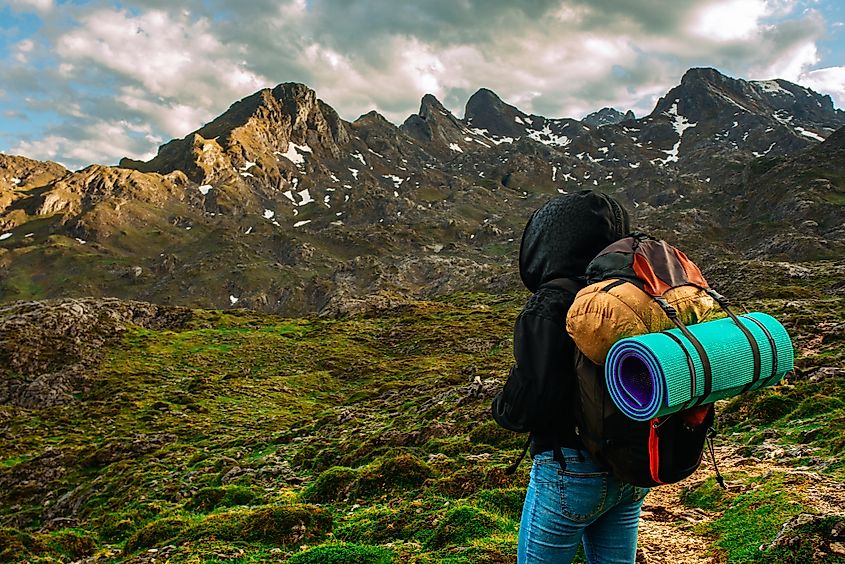
Picos de Europa was established as a national park in 1918 (expanded in 1995), and then a UNESCO Biosphere Reserve in 2003. Its 64,315 hectares (643 sq. km) straddles three Autonomous Communities in northern Spain (i.e., Asturias, Castilla y León, and Cantabria) and includes 11 agricultural settlements that harbor a collective population of 1,367 people - making it Spain's only inhabited nature reserve. The three distinct mastiffs of the park's namesake range form part of the broader Cantabrian Mountains. Hundreds of millions of years of glaciation and karstification have resulted in the barren yet expressive limestone formations that sprout from the vibrant meadows and diverse forests below. This unique blend of habitats provides sanctuary for thousands of plant species, as well as the endangered Iberian wolf and elusive Cantabrian brown bear.
The proximity to the Atlantic Ocean, specifically the Bay of Biscay, results in capricious, albeit visually-stimulating weather. So, while hikers and photographers may appreciate the moody fog at times, layers of hardy apparel are a must. No one knows this better than pilgrims of the Camino de Santiago. The challenging 800-kilometer Camino del Norte trail passes near Picos de Europa on its way across the northern coast of Spain to the historic town of Santiago de Compostela. For those focused solely on exploring the park boundary, this can be done by car and on foot. There are three visitor centers, 30 self-guided routes, 17 viewpoints, the aforementioned villages, and the basilica/holy cave known as Real Sitio de Covadonga - a striking commemoration of the battle of Covadonga, the Reconquest, and the formation of the Kingdom of Asturias.
Killarney National Park: Ireland
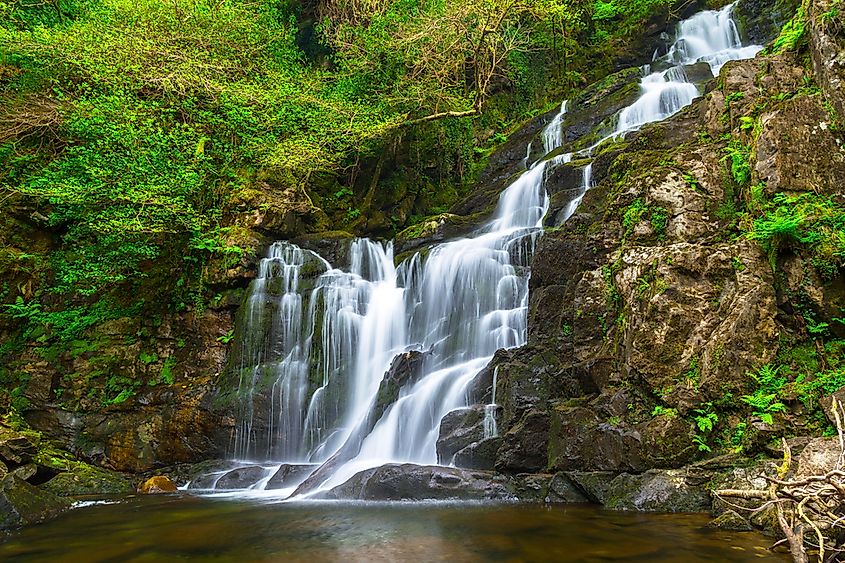
Ireland's first national park (est. 1932) covers 102.89 square kilometers on the southwestern portion of the island nation - just south of the titular town. Thanks to a mix of moorland, heath, bogs, waterfalls, and the inviting peaks of the modest Purple Mountains, Killarney National Park, which is also a UNESCO Biosphere Reserve, epitomizes the Irish landscape. Killarney is also home to three significant lakes, with the largest being Lough Leane. Across its 19 square-kilometer surface, there are some 30 islands, which act as scenic targets for boatbound tourists. As with any revered national park, hiking is one of the major pastimes in these parts. Along with traversing the open Celtic country, Killarney National Park also presents one of the most significant tracts of forest left in Ireland. Scatter in a few ancient castles, stone bridges, and opulent estates, and visitors have plenty of highlights to strive for.
Unlike some of the parks in Europe, Killarney is easily accessible. In fact, its visitor center is located within the town of Killarney, on the east side of Lough Leane. From there, highway N71 (aka Ring of Kerry) skirts between Muckross Lake and Torc Mountain as it bisects the heart of the park. Despite the ease of entry, this nature sanctuary sufficiently protects scores of hardy plants, 114 species of birds, and the only herd of red deer left on the island.
Triglav National Park: Slovenia
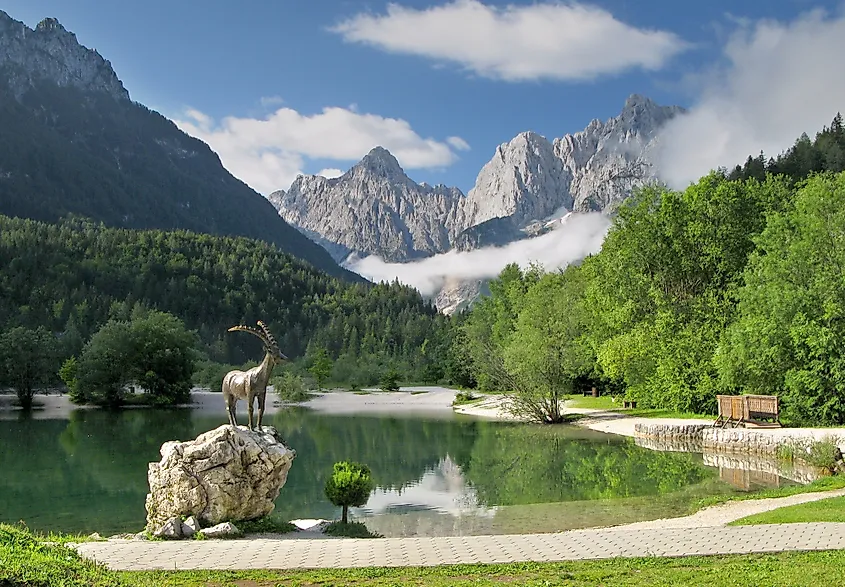
Slovenia's one and only national park is a robust gem of the Julian Alps. Years ago, while visiting the enchanted town of Bled and its corresponding lake, I was tipped off about nearby Vintgar Gorge - a one-mile boardwalk through a slim, glacially-carved, cinematic, and biodiverse canyon at the eastern boundary of Triglav National Park. This was but a taste of the 880 square-kilometer national park (i.e., just over 4% of Slovenia's total area!) that also serves the larger Julian Alps UNESCO Biosphere Reserve. Triglav takes its name from the 2,864-meter mountain at its epicenter. Around the broad periphery of this marquee attraction, limestone ridgelines fan out in all directions, where they are complemented by pure glacial lakes (that invite paddlers and brave swimmers), cascading waterfalls, blue-green river valleys, curious caves, spritely meadows, additional gorgeous gorges, well-marked hiking trails, quaint settlements, and defiant swaths of oxygenating forests. The first iteration of this Slovenian boundary breaker came in the form of the Alpine Conservation Park, which was christened on June 1st, 1924. The modern national park was then established in 1981 and was very successful. Today, Triglav National Park receives just under two million annual visitors, which, for perspective, is nearly the population of Slovenia.
Dunes Park Texel National Park: Netherlands
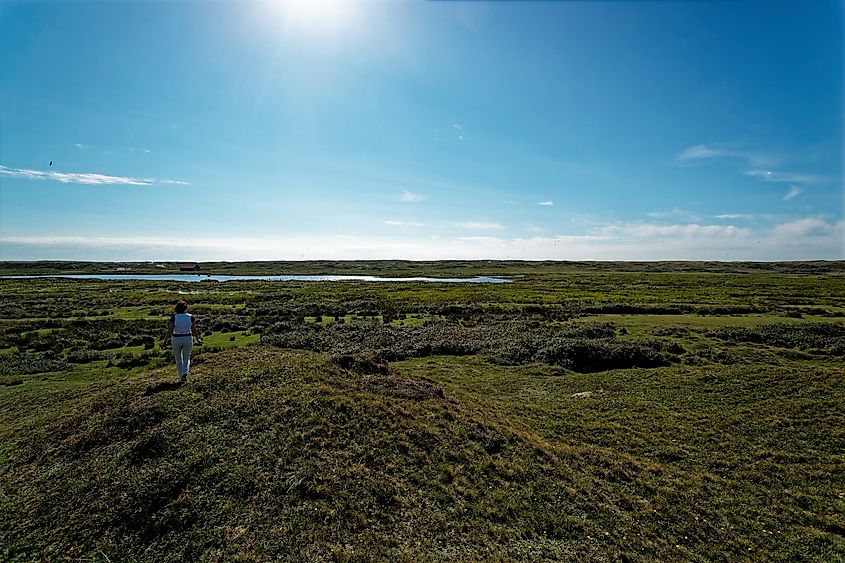
Any long-time World Atlas readers know that I'm a sucker for sand dunes. Well, the island of Texel (i.e. the largest of Dutch Frisian Islands, and part of the Wadden Sea World Heritage Site), is the premier site in the Netherlands to experience these eye-catching, leg-zapping formations. Dunes of Texel (or Duinen van Texel) National Park occupies 43 square kilometers of the western aspect of its namesake rock. This includes 30 kilometers of soft, sandy beaches - beaches that are dog-friendly, staffed with lifeguards (in the summer), and lined with rentable beach huts (for, even though Texel is rich in plant life, tree cover is seriously lacking). Such a scene naturally attracts sunbathers and swimmers, as well as a steady supply of kite enthusiasts, surfers (both of the standard and kite variety), and paddlers. In addition, hikers, cyclists, and equestrians are consistently drawn in by the mixed-medium, color-coded trail networks that explore coastal plains, woodlands, and the dunes themselves.
After a fun-filled day, take in a serene sunset from the shoreline, and then watch as a new beacon emerges on the north end of the island at the tip of Lighthouse Texel. During the day, this shepherd of Wadden Sea sailors, with its weathered red tower and stalwart white lantern room, punctuates the subdued hues of wide sands and fields of windswept marram grass. But with that said, Dunes of Texel National Park is more diverse than it might initially sound. The inviting shoreline is backed by wet dune valleys that serve as important spoonbill breeding areas, mudflats, and saltmarshes that are blessed with purple sea lavender and fresh inland waterways that host an array of orchids.
Europe's Wild Wonders Await
Amidst the streetside cafes, the art museums, the tours of medieval cathedrals, and the nightlife indulgences be sure to leave room in your 2025 Eurotrip for some of these spectacular national parks. For in the nooks and crannies of the continent, a little ways off the well-trod Frommer's path, these parks speak the universal language of the wild. And as with all things European, the odd castle or antiquitous village is sure to add that coveted dash of culture - just enough to remind you that you're not in Kansas anymore.











